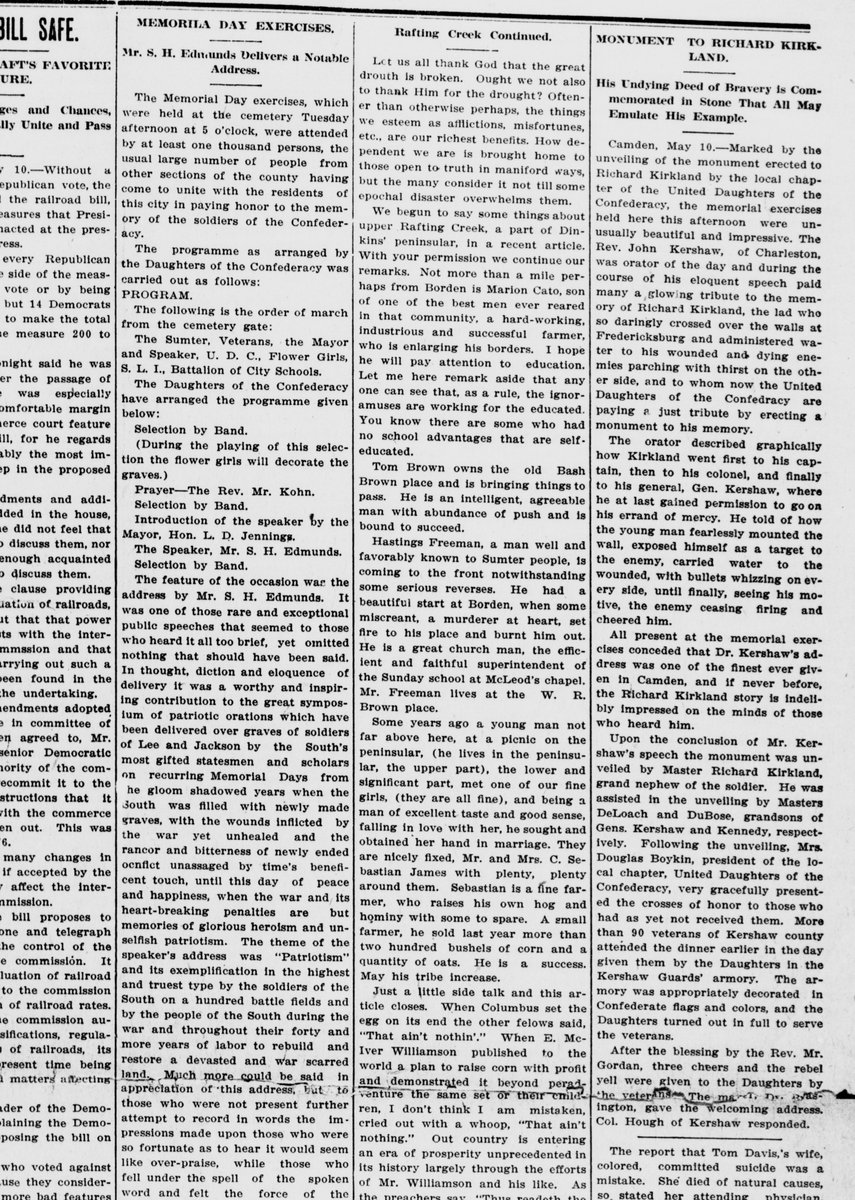Here is a wonderful example of how the push for a monument reflects the values and agenda of its boosters. Many of you are familiar with the monument to Richard Kirkland ("The Angel of Marye& #39;s Heights) on the Fredericksburg battlefield in Virginia. It was dedicated in 1965.
It represents one of the few Confederate monuments dedicated after the height of monument building between 1880 and 1930. Sergeant Kirkland served in a South Carolina unit and reportedly in the heat of the battle climbed over the stone wall to bring water to Union attackers.
There is no wartime evidence that this ever took place. Kirkland himself was killed before the war ended. The only accounts we have surfaced after the war. A monument to Kirkland was dedicated in Sumter, SC in 1910, but another push took place in the early 1960s.
On January 10, 1963 SC House Representative Robert W. Hemphill spoke in support of a monument honoring Kirkland. He recounted the story of Kirkland risking his life to bring aid to his enemies in the heat of battle, but toward the end Hemphill gets to the point of it all.
Hemphill was more concerned about the values or lack thereof of the youth of America at the height of the Cold War. Commemorating Kirkland would serve as a moral lesson.
He concluded: "This is the kind of commemoration of such acts of valor that will bring our nation together."
He concluded: "This is the kind of commemoration of such acts of valor that will bring our nation together."

 Read on Twitter
Read on Twitter




